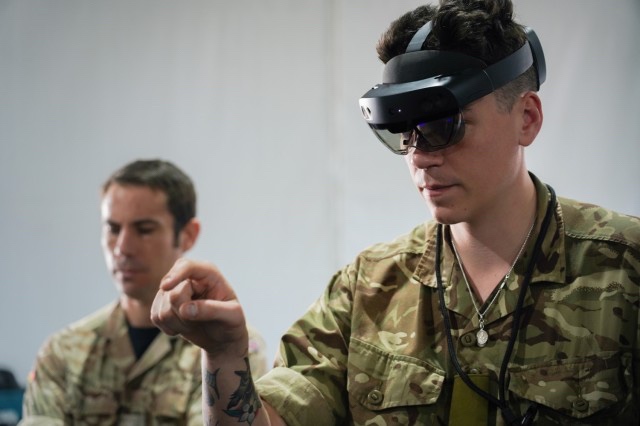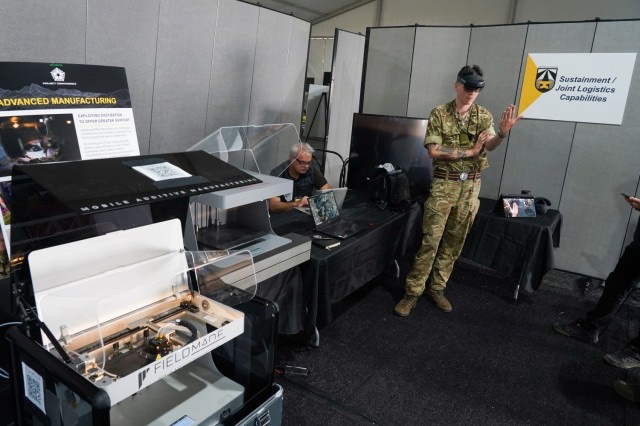
CAMP PENDLETON, Calif. — Warfighters from all branches of service and allied nations will need to work together closely on future battlefields to outwit and outperform adversaries. As the U.S. military and its partners take strategic steps to expand interoperability in theater, they are also evaluating how to maximize operational dexterity — including through the clever use of advanced manufacturing.
Encompassing everything from 3D printing to robotics, advanced manufacturing harnesses innovative technologies to improve traditional processes. The military’s application of advanced manufacturing in operational environments offers warfighters the ability to fix issues and make repairs on location and on demand, without needing to wait hours or days for key parts to arrive.
At Project Convergence 22, a U.S.-hosted all-service and multinational experiment designed to improve future force interoperability and readiness, U.S. and U.K. forces are assessing how they can strengthen interforce support through collaborative advanced manufacturing activities.
“It’s enjoyable, the integration,” said British Army officer Maj. Alex Shand of the experience.
As part of PC22 experimentation, Shand and his colleagues were able to successfully print — for the first time ever — U.S. Army materiel replacement parts using a British Army 3D printer.

This functionality is important because it shows how a multinational partner could potentially assist the U.S. military in making rapid equipment repairs on the battlefield, Shand explained. The increased flexibility could prove beneficial if a nearby unit lacked a 3D printer, for example, or if supply chain disruptions were preventing the timely delivery of missing parts.
Aiding the ability of warfighters to execute on-the-ground repairs is the British Army’s development of extended reality goggles. The high-tech goggles can be worn by an individual tasked with making repairs and synchronized virtually with relevant subject matter experts. These experts can then view what the individual on the ground sees and offer detailed instructions on how to tackle complex repairs, including by sending files, drawing overlay pictures, or rendering 3D models.
While the technology is still in initial phases of development and has yet to be ruggedized for field use, its pairing with 3D printing capabilities and evaluation at PC22 shows promise for the future, offering what Shand described as “an understanding of the right mix of technologies and skills to conduct repair by repair on the battlefield as a joint force.”
By Maureena Thompson, Army Futures Command

